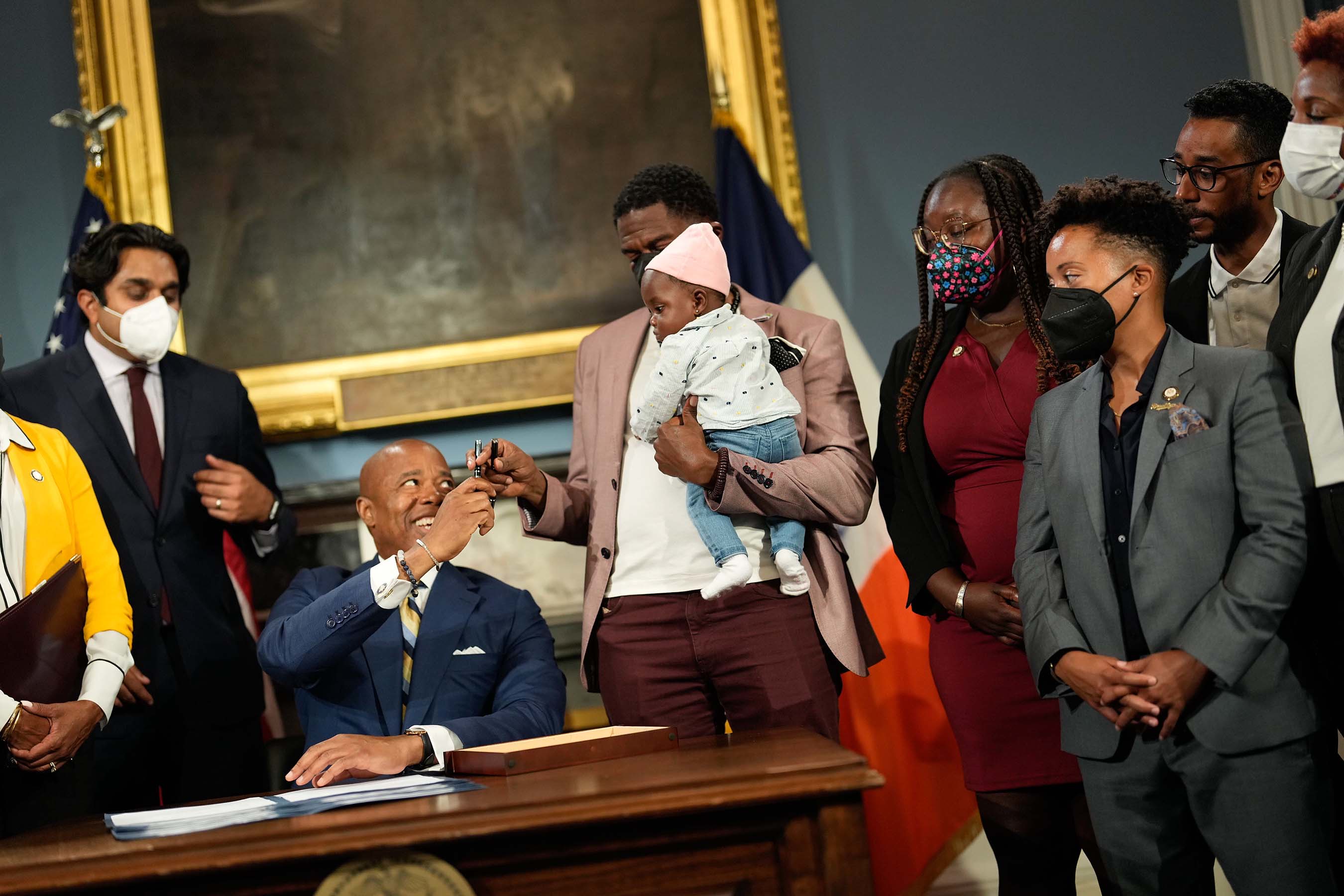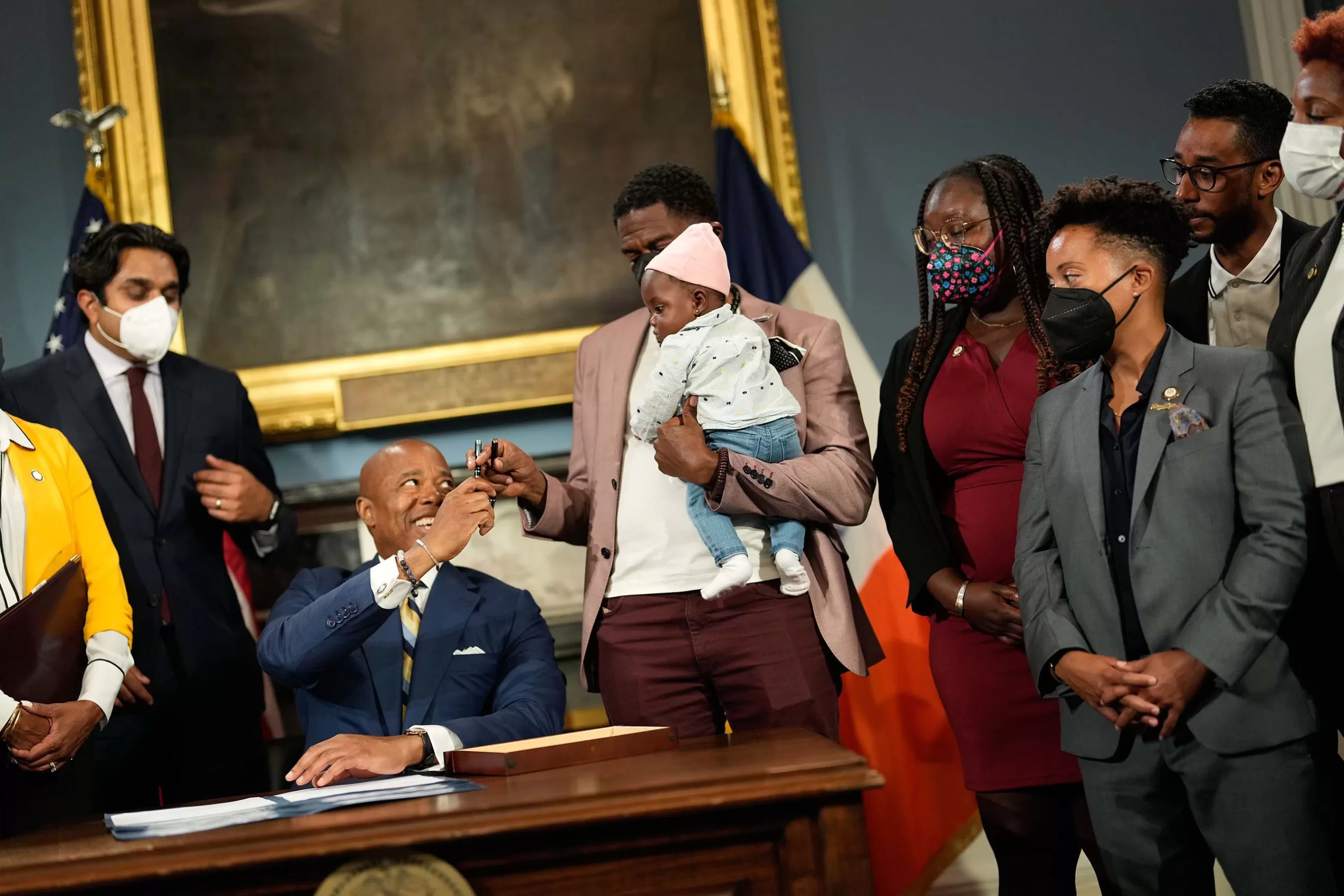
The vast majority of the city’s 300,000-plus-person workforce is unionized and receives paid family leave and parental leave through collective bargaining.
“Expanding parental leave for city workers and paid leave for those with a sick family member are not only important changes to retain the talent that keeps our city moving, but they are the right things to do to ensure our administration continues to help support the average working-class family in this city,” Adams said in a statement.
The salary increases went unmentioned in City Hall’s press release. But the deal was conveyed in a
Mayoral Personnel Order, posted online by the New York City Managerial Employees Association, a professional group for non-union employees.
Non-union workers are getting their salaries increased by 15.25 percent over a five-year period, plus a $3,000 lump sum payment. The announcement includes 3 percent wage increases each May dating back to 2021, followed by a 3.25 percent increase next year. Agency heads are also given the discretion to give employees additional pay increases, up to 1.43 percent of the managerial pay budget.
Those raises match the pattern set through collective bargaining for unionized employees. The Adams administration has reached labor contracts with 93 percent of the city workforce since taking office in 2022.
In total, the raises will cost $2.1 billion through fiscal year 2028, according to City Hall spokesperson Kate Smart, but it will be fully funded by money already in reserve funds.
The parental leave policy change will cost the city $2.5 million annually and will take effect immediately, with Adams signing the order, Smart said.
Family leave will be covered by employee payroll reductions of about $13 per paycheck and will go into effect in roughly 90 days.
Non-unionized workers’ benefits in this area were not just lagging their fellow city workers; almost all private employees in New York state have been granted up to 12 weeks of paid family leave by state law since 2018.
But public employers, like the city, had to opt in, and the city hadn’t done so for managerial employees until now.
Non-unionized workers had also not gotten pattern raises since October 2019, despite increased inflation and the rising cost of living, Managerial Employees Association Darrell L. Sims
wrote in Labor Press this week.
A non-unionized city worker, granted anonymity to discuss personal matters, applauded the new leave policy, saying it will make it easier to keep a city job while planning for a family. They added that the announcement comes at a time of lowered employee morale, saying: “People are starting to feel that freeze.”
Adams
implemented a hiring freeze in October 2023 as a way to save money amid a budget crunch, though hiring had slowed by then.
At the same time, the city has
lost thousands of employees, many of whom were working higher-paying desk jobs and could find better salaries and more flexible work-from-home policies elsewhere.
To that end, City Hall is explicitly framing this as an employee retention policy.
The pay boost comes after Adams presented a preliminary budget last month with a
far more positive financial picture that he’d previously been projecting. That reversal has put both Adams’ budget cuts, and new spending,
under scrutiny.
